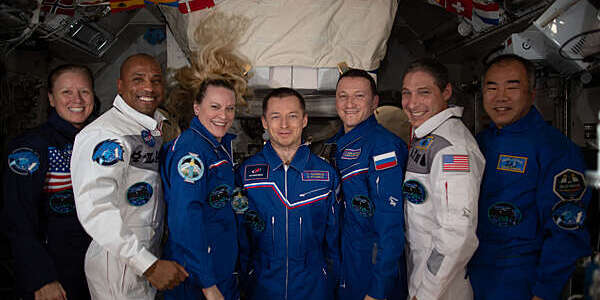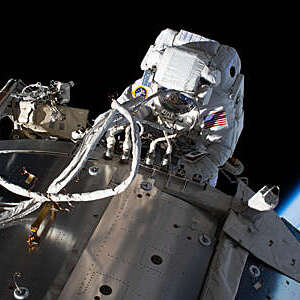International Day of Human Space Flight
Taking space exploration to new heights with ISO standards.
Today is the International Day of Human Space Flight, celebrating 60 years since Yuri Gagarin became the first person to leave our planet. It’s a fitting moment to celebrate the heroic achievements of all those involved in realizing similarly remarkable feats since.
Internationally recognized standards, such as those produced by ISO, are highly valuable elements of our missions.

© NASA Johnson/Flickr
With extreme levels of accuracy required in all aspects of space flight, from the equipment to the trajectory and communications from space back to Earth, ISO has hundreds of International Standards that are used by the major space agencies around the world, including NASA and the European Space Agency.
International collaboration is essential for space initiatives, but this requires common data sharing schemes for the industry. To promote interoperability and cross-support among cooperating space agencies, the Consultative Committee for Space Data Systems (CCSDS) works with ISO technical committee ISO/TC 20, Aircraft and space vehicles, subcommittee SC 13, Space data and information transfer systems[1], to actively develop recommendations for data and information systems standards. Many of these are used in thousands of human and robotic missions by space agencies around the world, including NASA.
Badri Younes, Manager of NASA Space Communications and Navigation, points to the criticality of internationally recognized standards when missions rely upon extremely complex data for their success.
“Space missions require a high degree of accuracy in trajectory and communications, both direct-to-Earth and via relay links to one or more orbiters,” said Younes. “Internationally recognized standards, such as those produced by ISO and the CCSDS, particularly for data exchange and navigation, are highly valuable elements of our missions.”
One of the hundreds of ISO standards used by the many space missions around the world is ISO 19389, Space data and information transfer systems – Conjunction data message, which helps researchers keep track of the tens of thousands of things orbiting in space to avoid any collisions. Another example is ISO 13537, Space data and information transfer systems – Reference architecture for space data systems, that is used by mission and project design teams to describe system architectures and designs within the space domain.
Sami Asmar, General Secretary of the CCSDS and Committee Manager of ISO/TC 20/SC 13, reflected on 60 years of human space flight’s contributions to life on Earth.
“Human space exploration has led to many scientific breakthroughs and discoveries in many areas,” said Asmar. “ISO/TC 20 and its subcommittees are continually looking to improve standards and develop new ones that enable these successes, all of which benefit society as a whole.”
- The secretariat of ISO/TC 20/SC 13 is held by ANSI, ISO’s member for the USA.
